This is our second Book Report and we’ve been having a ton of fun with the theme, so they’ll be more to come. Some of the books we cover are hot off the press and need some tire-kicking by us architects in the trenches, and some are books that have simply been around a while for good reason. For previous Book Reports click here.
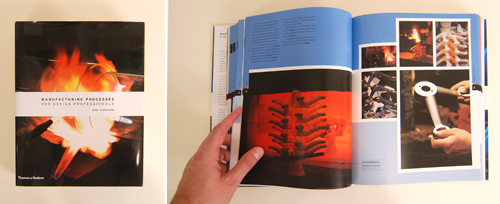
Manufacturing Processes for Design Professionals by Rob Thompson, Thames & Hudson, $95.00
This is a serious book, the kind of book that you’ll actually learn something useful from. The text categorizes manufacturing into 5 clear parts; Forming, Cutting, Joining, Finishing and Materials, all the while explaining the process behind your favorite design objects. The documentation is so concise and thorough that you feel like you’ve just bought a black market text on trade secrets – which justifies the sticker price. This book is so valuable that it should be sold in a black envelope reading “for your eyes only”.

Searching for True, Cutler Anderson Architects, Rizzoli, $85
This gorgeous book applies the rigor Cutler is known for into words and photographs. Designed by Pablo Mendel with photographs from Art Grice, the pages that fill this book are so beautiful that it simply doesn’t stay on the shelf. In addition to being a powerful inspiration it’s also a working reference tool.
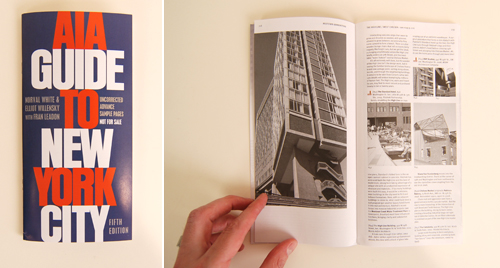
AIA Guide to New York City, Oxford University Press, $40
Now in its fifth edition, this is an essential guide for architects and designers alike. And if you don’t happen to live in New York, you need it all the more. The team behind the guide has picked apart the 5 boroughs like a scientific manifesto. It’s as if Carl Linnaeus, father of naming, ranking, and classifying organisms, set his sights on architecture. If it’s a significant piece of design, it’s not only in the book but organized by style, borough and neighborhood. In addition to the data and maps, most entries also include a bit of insight to the design philosophy and history.
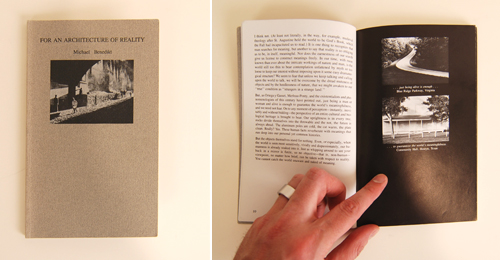
For An Architecture of Reality by Michael Benedikt, Lumen Books, $10
One of the formative texts from our academic days, Benedikt’s ideas stand the test of time. The book focuses on four primary qualities of architecture; presence, significance, materiality, and emptiness. It addresses the tangible, rawness and poetics of architecture and we still pick it up when we need reassurance that there is a place for real work in the world.
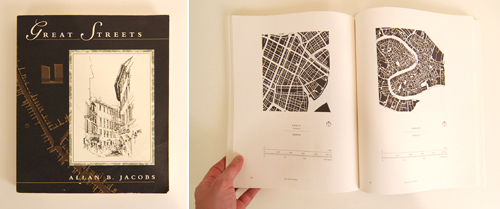
Great Streets by Allan B. Jacobs, M.I.T. Press, $29
Lesser known that his wife Jane Jacobs (huge respect), his work is no less important and it complements Jane’s work nicely. Filled with maps and diagrams, those who are data-driven will devour this text. Not only are the drawings well crafted but Jacobs went to a considerable length to keep all the maps at the same scale for comparative purposes. And if you enjoy sketching in urban environments this book is the Holy Grail. An architecture and design bookshelf without Great Streets is entirely incomplete.
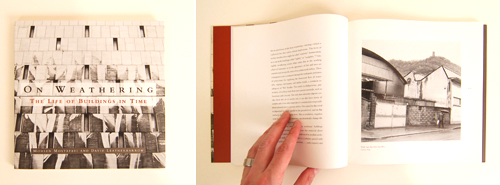
On Weathering, The Life of Buildings in Time by Mohsen Mostafavi and David Leatherbarrow, M.I.T. Press, $29
A passionate work on the natural processes that occur after the architect has left the scene. Above and beyond the rare images and crafted text, the book reveals those architects who, throughout time, have had the knowledge and insight to design in harmony with the process of weathering. Reading through this book is a journey of sorts, and you feel like you’re privy to someone’s private diary on the life of significant buildings.
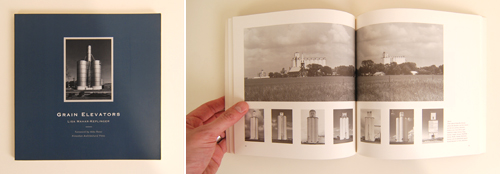
Grain Elevators by Lisa Mahar-Keplinger, Princeton Architectural Press, $20
This brilliant analysis of “America’s cathedrals” breaks down the design of grain elevators into a scientific set of photographs and drawings. The book addresses construction materials, town planning and goes as far as studying the location of elevators in reference to one another. This is a pleasant book to have on the shelves and the only problem we found with it so far is that it makes us want to jump in the car and take a long road trip through America’s Midwest with a circa 1970 SLR camera and a bag of black and white film.
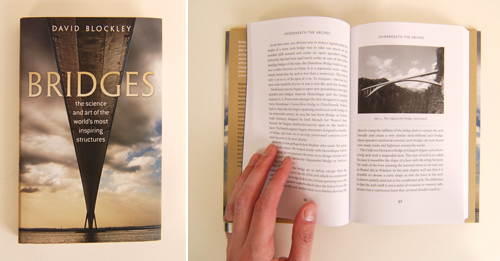
Bridges: The Science and Art of the World’s Most Inspiring Structures by David Blockley, Oxford University Press, $30
We like bridges enough to dedicate entire blog posts to them; needless to say we were thrilled to see Blockley’s Bridges appear on our desks. Part historical documentation, part structural analysis, the book has its bases covered. It’s also one of the few analysis text books out there to use hot, modern case studies like the Milau Viaduct in France. The straight-forward diagrams were a welcomed refresher course on the engineering basics – stuff all architects should be familiar with.






